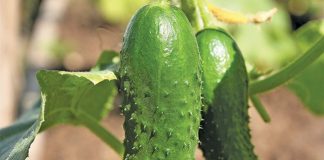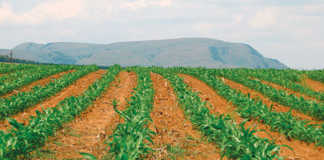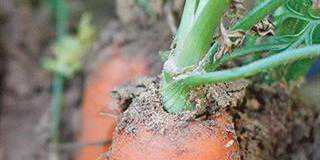These can be better protected from heat, cold, wind or drying out until the seedlings are strong enough to be transplanted into beds. Certain crops respond better to being planted in peat in the small compartments of seedling trays rather than in seedling boxes. These are the crops that don’t like their roots disturbed. Maize, melons, squashes, and many other semi-hardy plants benefit from this. You can also buy planted seedlings from a nursery and transplant them into the soil. The nursery will tell you how to space the seedlings in the bed.

Transplanting:
Step 1
Be careful not to damage the seedling’s roots. Plant when rain is forecast.
Step 2
Remove the seedling gently from the seedling tray and ensure that as much soil as possible is still attached to the roots. With larger or more delicate plants such as tomatoes or sweetcorn, keep a ball of soil on the roots and very carefully put the plant into a small hole dug with a trowel.
Step 3
Transplant the seedlings gently, with their roots spread naturally as they were before. Plant larger seedlings in with a trowel and smaller ones with a dibber (a pointed stick).
Step 4
After putting the seedling into the soil, push the soil down firmly around the stem, but don’t be rough as you’ll break off the tender roots.
Step 5
Once the transplanting is finished, water the seedlings, but not too much. Use a hosepipe, a watering can or even a tin with small holes that makes small drops. Keep the soil moist by watering regularly in small amounts. The seedlings will die if the soil dries out, or if the soil remains soaked. Although you can buy seedlings from a nursery, this could be expensive. Buying a packet of seed and growing your own seedlings is more affordable.
Read more about Planting seeds.
Source: The New Complete Book of Self-Sufficiency by John Seymour.













